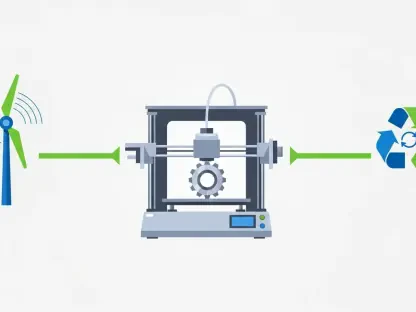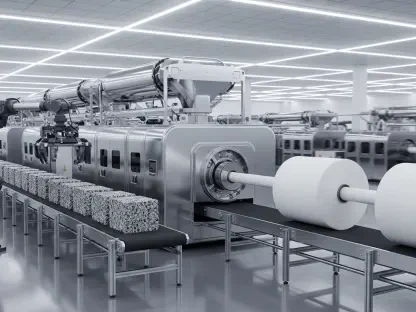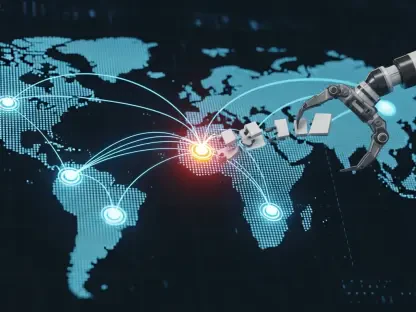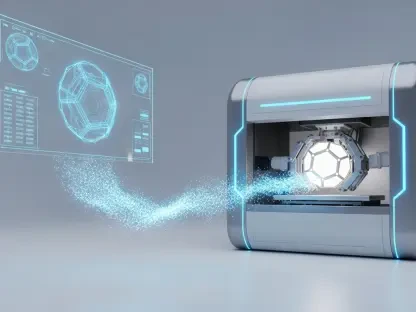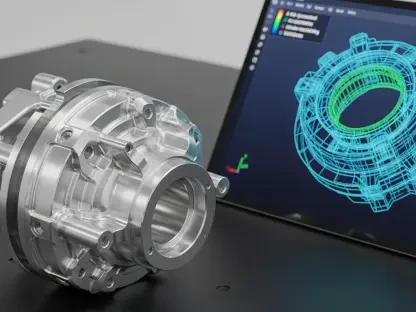Introduction
Imagine a sprawling manufacturing plant grinding to a halt, not because of mechanical failure, but due to a silent cyberattack infiltrating its operational systems, costing millions in downtime and damages. This scenario is no longer a distant threat but a stark reality for many manufacturers grappling with the intersection of cybersecurity and aging infrastructure. The rise of digital transformation has brought immense opportunities, yet it has also exposed vulnerabilities in operational technology (OT) and information technology (IT) systems that underpin production. With artificial intelligence (AI) often touted as a game-changer for detecting and preventing such threats, there’s a pressing need to examine whether this technology can truly address deep-rooted flaws in manufacturing setups.
The purpose of this FAQ article is to delve into the complexities of using AI as a cybersecurity solution within manufacturing environments. By addressing key questions, this content aims to provide clarity on AI’s potential, its limitations, and the broader systemic issues that must be tackled. Readers can expect to gain insights into why a holistic approach, beyond just technological fixes, is essential for securing critical infrastructure.
This exploration will cover the challenges posed by legacy systems, data quality concerns, and external risks, among other topics. Each section is designed to offer actionable insights and context, ensuring a comprehensive understanding of why AI alone cannot solve the intricate puzzle of manufacturing cybersecurity. The goal is to equip stakeholders with knowledge to make informed decisions about building resilient systems.
Key Questions on AI and Manufacturing Infrastructure
What Are the Main Cybersecurity Threats Facing Manufacturers Today?
Manufacturing facilities face an escalating array of cyber threats that go beyond traditional IT breaches, impacting physical operations and safety. Ransomware attacks, supply chain disruptions, and data theft have become commonplace, often targeting interconnected OT systems that control machinery and production lines. High-profile incidents, such as factory shutdowns and massive financial losses in industries like aerospace and food processing, underscore the severity of these risks.
The importance of addressing these threats lies in their cascading effects. A single breach can halt production, compromise employee safety, and damage customer trust, leading to long-term reputational harm. Unlike IT systems, where recovery might involve data restoration, OT disruptions can result in physical damage or prolonged downtime, amplifying the stakes for manufacturers.
Insights into mitigating these threats reveal that while AI can play a role in early detection, the root causes—such as outdated systems and poor security protocols—require broader intervention. Real-world examples demonstrate that companies suffer losses in the hundreds of millions due to inadequate defenses, highlighting the urgency of adopting comprehensive strategies over singular technological solutions.
Why Is AI Seen as a Promising Tool for Cybersecurity in Manufacturing?
AI has gained attention for its ability to enhance cybersecurity through advanced threat detection and anomaly identification in complex manufacturing environments. By analyzing vast amounts of data in real time, AI tools can spot subtle irregularities that might indicate a cyberattack, potentially preventing costly disruptions before they escalate. This capability is particularly valuable in settings where IT and OT systems converge, creating numerous entry points for attackers.
The context behind AI’s promise is the increasing sophistication of cyber threats that traditional methods struggle to counter. With manufacturing systems becoming more connected, the volume of data and potential vulnerabilities grows, necessitating smarter, faster responses. AI’s strength lies in its capacity to adapt and learn from patterns, offering a proactive rather than reactive approach to security.
However, enthusiasm for AI must be balanced with realism. While it can flag potential issues, it often lacks the contextual understanding needed to prioritize alerts or suggest specific actions in OT settings where safety and uptime are critical. Thus, integrating AI with human expertise and system-specific knowledge remains a vital component for its effective deployment.
What Are the Limitations of AI in Addressing Manufacturing Infrastructure Flaws?
Despite its potential, AI cannot overcome the inherent weaknesses in manufacturing infrastructure on its own, particularly when dealing with legacy OT systems. These systems, often decades old, were designed for stability rather than adaptability, making them incompatible with frequent updates or autonomous AI features. This mismatch can introduce new vulnerabilities if AI tools are not carefully configured.
Another critical limitation is AI’s dependence on high-quality data. In manufacturing, where sensors and systems may produce inconsistent or incomplete inputs, AI can generate inaccurate conclusions, leading to false positives or overlooked threats. Such errors can have severe consequences in environments where precision and safety are non-negotiable, emphasizing the need for rigorous data validation.
Furthermore, many AI tools lack transparency, raising alerts without explaining the underlying reasoning. This opacity can lead to alert fatigue among staff, reducing their ability to respond to genuine dangers. Without human oversight and clear integration strategies, AI risks becoming a hindrance rather than a help in securing flawed infrastructure.
How Do Legacy OT Systems Complicate AI Integration?
Legacy OT systems present a unique challenge for AI integration due to their outdated architecture and prioritization of uptime over security. Unlike IT setups that can accommodate regular patches, OT environments often run on obsolete software or hardware, harboring vulnerabilities that AI cannot inherently resolve. These systems are critical to production, yet their rigidity limits the application of modern cybersecurity measures.
The significance of this issue is evident in the potential risks of disruption. Introducing AI into such environments without a deep understanding of their operations can lead to unintended consequences, such as triggering false shutdowns or missing critical threats. For instance, default AI features embedded in equipment might operate without organizational oversight, creating blind spots in security protocols.
Addressing this challenge requires more than technology; it demands a cultural shift toward collaboration between IT and OT teams. Tailoring AI solutions to the specific constraints of legacy systems, while planning for gradual modernization, offers a path forward. Without such alignment, AI’s benefits remain limited by the very infrastructure it seeks to protect.
Why Is Data Quality So Critical for AI Effectiveness in Manufacturing?
Data quality stands as a cornerstone for AI’s effectiveness in manufacturing cybersecurity, as flawed inputs can derail even the most advanced algorithms. In production settings, data often comes from diverse sources like sensors and machinery, which may be prone to errors or inconsistencies. AI systems relying on such data risk producing unreliable outputs, potentially exacerbating rather than solving security issues.
The importance of this factor cannot be overstated, given the high-stakes nature of manufacturing environments. A single erroneous AI decision, driven by poor data, could lead to operational failures or safety hazards, undermining trust in the technology. This challenge is compounded by the lack of standardized data practices across many facilities, making consistent AI performance difficult to achieve.
To counter this, manufacturers must prioritize data validation and invest in systems that ensure accuracy before AI analysis. Human oversight plays an indispensable role in verifying inputs and interpreting AI conclusions, preventing costly mistakes. Only with robust data foundations can AI deliver on its promise of enhancing security in these complex settings.
What Role Do Third-Party Risks Play in Manufacturing Cybersecurity?
Third-party risks represent a significant vulnerability in manufacturing cybersecurity, extending beyond internal systems to suppliers and partners. Compromised software, sensors, or components from external sources can serve as entry points for attackers, bypassing even the most sophisticated AI defenses. This interconnectedness of supply chains amplifies the potential impact of a single breach across multiple organizations.
Understanding this risk is crucial, as manufacturers often lack full visibility into their partners’ security practices. An attack on a supplier can ripple through the supply chain, disrupting operations and causing financial losses. The complexity of these relationships makes it challenging to enforce uniform cybersecurity standards, leaving gaps that AI alone cannot close.
Mitigating third-party risks requires clear policies, regular audits, and collaborative frameworks with external stakeholders. AI can assist by monitoring for anomalies in third-party interactions, but it must be supported by contractual agreements and training programs that prioritize security. Building trust and accountability across the supply chain remains essential for comprehensive protection.
Summary of Key Insights
This FAQ article has explored the multifaceted role of AI in securing manufacturing infrastructure, highlighting both its strengths and shortcomings. Key points include the escalating cyber threats that disrupt production and safety, AI’s potential for early threat detection, and the significant limitations posed by legacy OT systems and data quality issues. Each question addressed underscores that while AI is a valuable tool, it cannot address systemic flaws without broader strategic support.
The main takeaway is the necessity of a holistic approach that integrates AI with human oversight, system visibility, and proactive design. Manufacturers must tackle internal and external risks, such as third-party vulnerabilities, through collaboration and robust policies. These insights emphasize that cybersecurity in manufacturing is not solely a technological challenge but a structural and cultural one.
For those seeking deeper understanding, exploring resources on OT-IT convergence and supply chain security can provide additional perspectives. Industry reports and case studies on cybersecurity frameworks offer practical guidance for building resilience. Engaging with these materials can further illuminate the path toward secure and sustainable manufacturing operations.
Final Thoughts
Reflecting on the discussions held, it becomes evident that the journey to secure manufacturing infrastructure demands far more than technological innovation. The challenges of legacy systems, data integrity, and external risks reveal a landscape where AI serves as a helpful ally but not a complete solution. Manufacturers who embrace this reality take steps to blend technology with strategic planning, ensuring lasting protection.
Moving forward, the focus should shift to actionable measures like investing in system modernization during facility upgrades or construction phases. Establishing strong partnerships with third-party entities and fostering a culture of cybersecurity awareness among staff emerge as critical next steps. These efforts promise to create a foundation where AI can thrive as part of a broader, more resilient framework.
Ultimately, the path ahead calls for a commitment to continuous improvement and adaptability. By prioritizing collaboration between IT and OT teams and embedding security into the core of infrastructure design, manufacturers position themselves to navigate evolving threats. This proactive mindset offers the best chance to safeguard operations against the unseen dangers of a digital age.


